
Celebration of Diversity Rings Across
By Sherry Paprocki
Celebration of Diversity Rings Across Campus
Prior to the evening’s Vail Series performance, saxophonist Victor Goines and other members of the Lincoln Center Jazz Orchestra conducted a workshop with the Denison University Jazz Ensemble.
When Lisa Scott and Vincent Briley are in the same room, there’s an energy that flows, a buzz that begins, ideas that spark. It’s no wonder that these two relatively new Denison administrators were able to turn the annual one-day commemoration of Martin Luther King Jr. into a months-long, unprecedented celebration of diversity during spring semester. Events kicked off in January, when the Martin Luther King convocation featured author Cheryl Townsend Gilkes. A few days later, Wynton Marsalis was and the Lincoln Center Jazz Orchestra performed a Vail Series concert to a packed Swasey Chapel. Marsalis also delivered an eloquent lecture about the importance of understanding one’s self and one’s own experiences, and received an honorary doctoral degree from University President Dale Knobel. Events crammed the calendar from that point on through April, as the celebration of diversity—gender, racial, and religious—seemed to have no end in sight. “At one point we couldn’t get it all on the calendar,” recalls Scott, the college’s director of affirmative action and diversity. “The reason it was so extraordinary was because it was so collaborative among so many campus entities.” The film department presented a special series, while diverse exhibitions were scheduled by the art and dance departments. The biology department pitched in to present a conversational program about women of color in science-related careers. The library staff offered their facilities for musical presentations and receptions, and combed the archives to reveal little-known historical information about diversity on Denison’s campus. And then of course there was the plethora of reknowned guest scholars and artists who contributed to the multi-dimensional exploration of diversity.
Two years ago, when Scott and Briley first arrived on campus, both thought that there was an eerie silence regarding the diversity events. Scott had experience with social equity at Bloomsburg University in Pennsylvania and multicultural affairs at Roger Williams University in Rhode Island. Around the same time, Briley brought his experience in multicultural student affairs at Ohio State University to the post of Denison’s director of multicultural student affairs.
But today they are humble about their influence on the diverse programming that Denison has hosted. “We had but to ask,” says Scott, adding that no department on campus turned them away when asked to participate. “After a while, people started coming to us.” Giving credit to students, faculty, and staff, Briley says that Denison’s energetic support for diversity has moved it to the forefront of many of its peer institutions.

Top photo: Vincent Briley, director of multicultural student affairs.
Bottom: Lisa Scott, director of affirmative action and diversity
To both organizers, the importance of co-curricular learning was paramount to the series of events. “To have juniors and seniors saying ‘we’ve never had this type of experience before,’ is an opportunity to show Denison in a different light—to show depth and breadth of discussion,” says Briley.
“It was a really nice coming together,” adds Scott, who was already talking with Briley about next year’s celebration as this one wound down. “For me, it is what a university is supposed to be.”
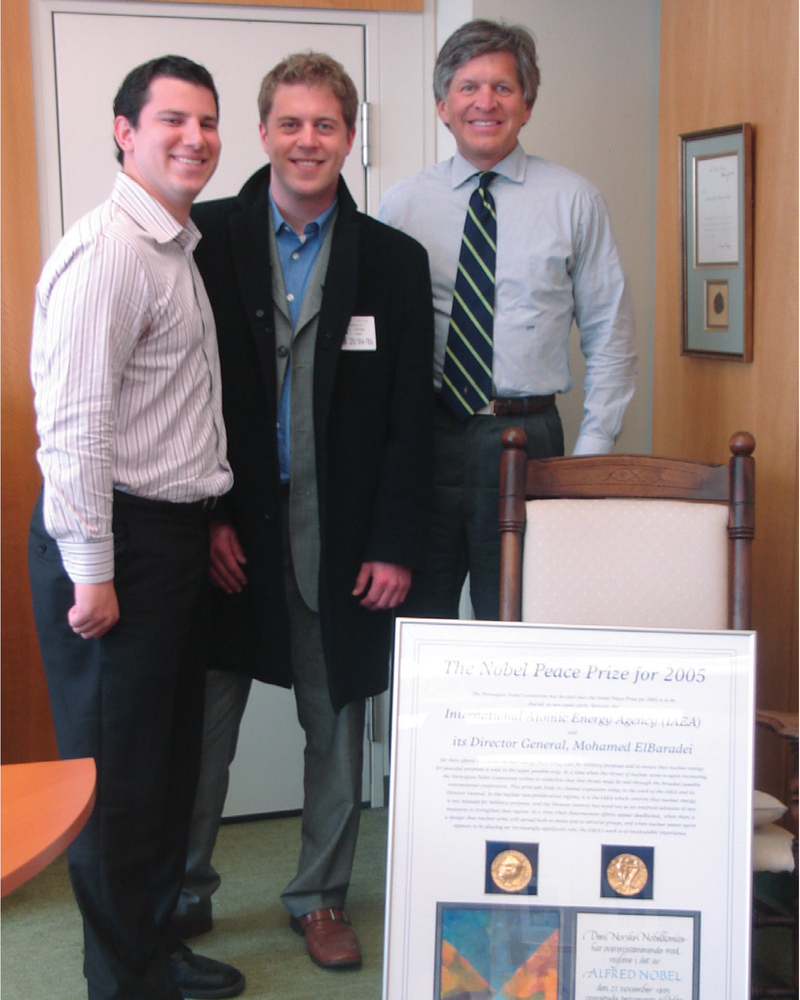
Letter of the Year
From Eduardo Tapia ’05
Letter of the Year
Denison University frequently receives letters and phone calls from alumni around the globe. Some are reminiscent, some inquisitive, some critical; all are greatly appreciated. But one in particular stood out last year, and we can’t help sharing it here…
Dear Alumni Affairs Office, I am writing to share an incredible Denison moment in Vienna, Austria, on April 29th of this year. Philipp Hofmann ’06 and I had the honor to meet with David Waller ’70, deputy director general of the International Atomic Energy Agency. The illustrious Mr. Waller received us at a last-minute notice upon my request via email to meet and thank him in person for his touching commencement address to my graduating class last May. Almost one year away from my commencement ceremony, I felt the timing made our reunion even more symbolic. I wanted him to know that his farewell speech serves as motivation in my career development after Denison, and how Denison has stayed close to my life even continents and oceans away from the hill. Our meeting continues to fuel my personal efforts to emulate inspiring grads like Mr. Waller and materialize one of the major themes in his speech: that of finding a career that grants me fulfillment and simultaneously allows me “to somehow transform our troubled world.”
In his commencement address, Mr. Waller best summarized this very special moment that Phil and I were privileged to enjoy—this moment that manifests what Denison is all about and the opportunities that arise in the years after graduation from this fine institution.
From Mr. Waller’s speech, May 2005: “There’s something about this institution that finds me—even a continent away—giving priority to any email or phone message that indicates it’s from someone connected with Denison. And it’s that feeling—common among its proud graduates—that accounts for the existence of what I call the ‘Denison network.’ When you leave this campus today and move out into the wider concentric circles of life that surround Granville and Ohio and beyond, don’t fail to take advantage of that network. It can be a tremendous source of both friendship and support.
“I’ll give you an example. You’re all aware that the distinguished Senator Richard Lugar [’54] is one of ours—a Denison graduate, not to mention a Rhodes Scholar. As you may know, he delivered the commencement address here just two years ago. What you may not know is that he was also the speaker at graduation in 1970—the year I sat where you now sit.”
Cheers to Denison, Eduardo
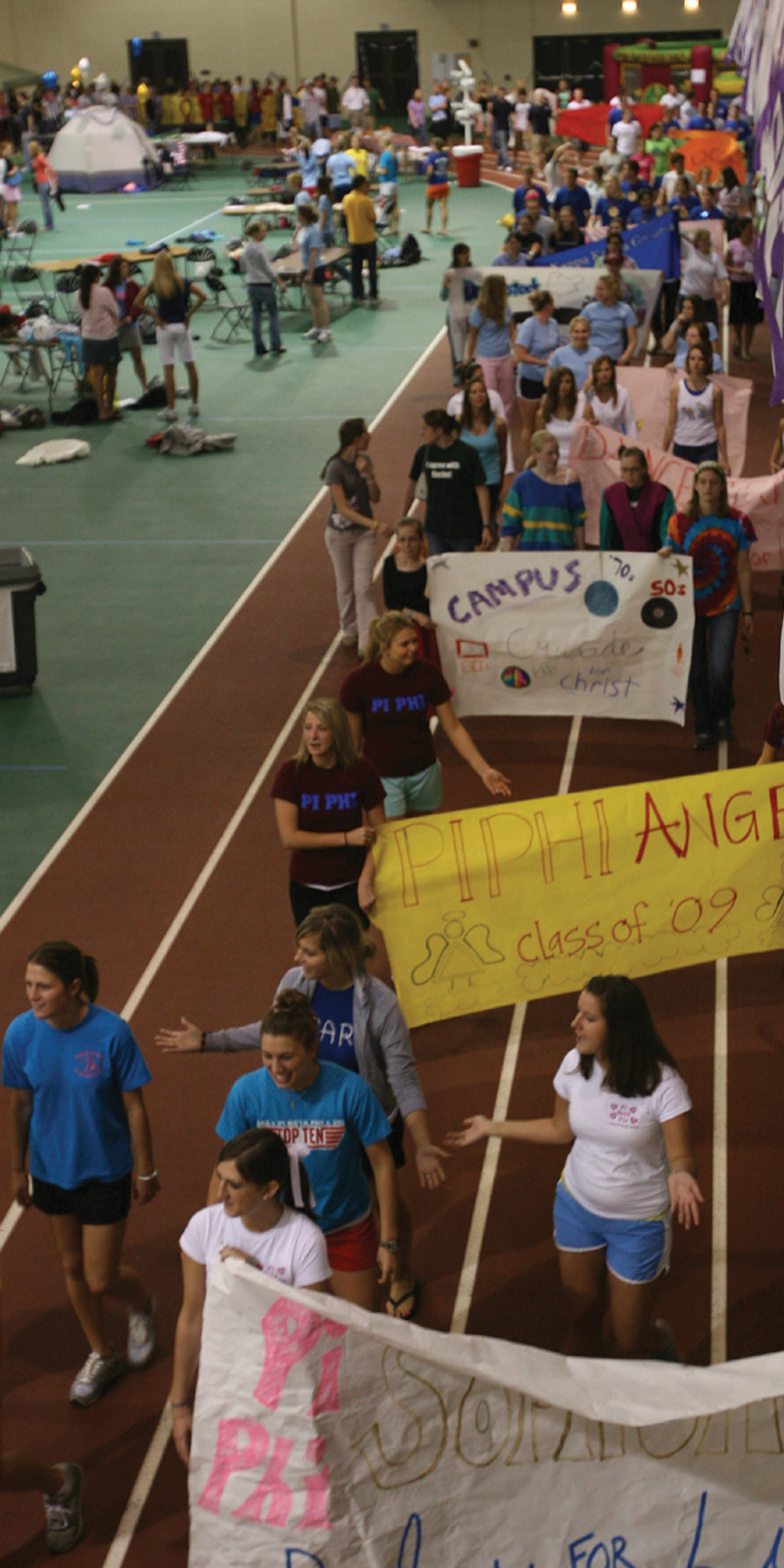
Student-Run ‘Relay For Life’ Surpasses $70,000 Goal to Fight Cancer
By Sherry Paprocki
Student-Run ‘Relay For Life’ Surpasses $70,000 Goal to Fight Cancer
The co-chairs of Denison’s 2006 Relay For Life, Sarah Coulam ’06 and Bill Froehlich ’06, are exuberant that more than half of the campus population helped raise more than $75,500 to benefit the American Cancer Society. But the April event was more than just another charity fundraiser for its organizing committee.
On the fourth floor of Slayter Hall during a March meeting, central committee members were told that the mother of one of their peers had just died from cancer. Immediately, their passion for the work they had been doing for the past year seemed to grow deeper.
“The news hit home with most of us since the majority of the committee has been personally affected by cancer,” says Coulam, whose father survived colon cancer four years ago. “We want to help her through this time as best we can.”
So the committee stayed on track, spending the coming weeks talking of entertainment line-ups, sound systems, big inflatable games, food for participants, a head-shaving event, a special sleeping room at the Mitchell Center for those who preferred not to sack out on the event floor, and much, much more. They organized a campus kick-off party for April 5, two weeks before the actual event. They sold luminaries that were lit at the soccer and lacrosse field in the opening hours of the Relay, in honor of those who have had cancer, and organized a special, inspiring lap for cancer survivors.
Now, Froehlich and Coulam can look back on Relay For Life ’06 with immense satisfaction. “Because we surpassed $70,000, we are in the running for the highest per capita Relay event in the State of Ohio—that is also exciting,” says Froehlich, a native of Avon Lake, Ohio. “It is a great feeling to have reached something that Sarah and I have worked to put together since last April
Relay For Life was introduced to the campus by Denison’s Panhellenic Association in 2003, when the event raised more than $52,000 toward cancer research and education. In 2004, the last time that the event was held, it raised another $63,000. Relay For Life became an independent student organization this year under the Denison Campus Governance Association in an effort to attract more participation. The event was made shorter (18 hours instead of 24), but was more action-packed than ever before. Activities started at 6 p.m. on April 21 and ended at noon the following day.
More than 50 student volunteers helped plan the event. “The committee is composed of an exceptional group of students who put together a well-coordinated Relay event,” says Mark Orten, Denison’s director of religious life and the group’s advisor.
For Coulam, the effort she put into the Relay was a personal priority. “It is a difficult thing to go through,” she says of those who have dealt with the illness. “I support the American Cancer Society not only for trying to help provide financial resources for a cure, but also for their passion to inform people about preventing it and learning how to cope with it.”
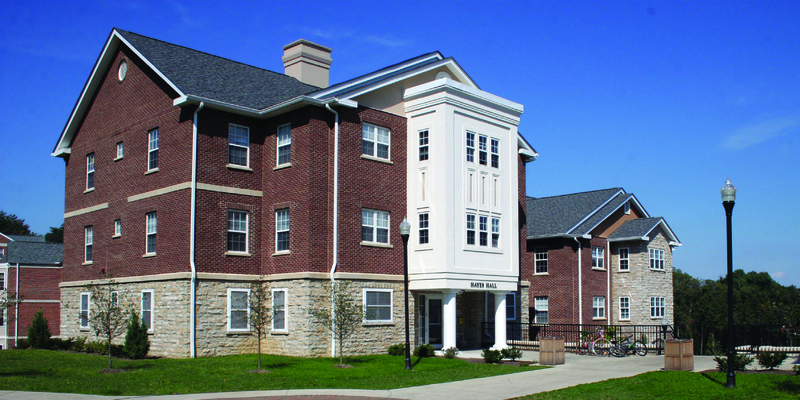
Living in (Apartment) Style
By Abbe Wright ’07
Living in (Apartment) Style
Denison’s annual housing lottery is an unfailingly tense time, but for the 537 members of the Class of 2006 the stakes were a little higher as they drew for their final year on campus. For they knew that a lucky 112 of them would score the hottest real estate on the market: the college’s brand-spanking new apartment-style residence halls, situated on the hillside just below Sunset House and between the Sigma Chi house and the senior mecca of four other apartment-style halls known as the “Sunsets.” Dubbed early on as “the brownstones” for their distinctive architectural style, they featured four single bedrooms per apartment, each with a common area for shared dining and relaxing, a kitchen area with stove, oven, and refrigerator—and all without the “lived in” feel.
Representing the college’s long-term plan to make apartment-style living available to most of the senior class, the apartments were approved for construction by the board of trustees during Homecoming Weekend of 2003. That autumn, architects consulted on plans and site selection and at the January Board meeting the plans were made official. Ground was broken that spring, and construction finished up just in time for the Class of ’06 to move in at the start of their senior year. The four new residence halls were called Upper and Lower Elm and Upper and Lower Maple, with the notion that those names could change at the behest of significant donor support.
The brownstones remained highly sought-after as the Class of 2007 moved into them this year. Jordan Giangola ’07, who was a first-year student when the trustees initially approved the construction, was quoted in an October 2003 issue of The Denisonian as saying “I think it is important for students to experience apartment-style living while still being on campus.” She was excited about the prospect of additional apartment-style living options available by her senior year. Now a resident of Lower Elm, Jordan says living in the brownstones is “essential for the independence that follows the senior year of college.”
But not-so-subtle changes had already taken place by the time Giangola and her classmates moved into the brownstones this year. Thanks to a generous anonymous donation last spring, Upper and Lower Maple were renamed Hayes and Wright Halls, respectively. Hayes gets its name from Woody Hayes ’35, who as a student lived just across the hill in the Sigma Chi house and later coached Big Red football from 1946 to 1948 before earning his fame and three national championships as coach of the Ohio State Buckeyes. Wright Hall commemorates beloved theater professor Ed Wright, pioneer of Denison Summer Theater. With names of Denison greats hanging over the front doors, the brownstone apartments certainly feel like home on the Hill.
Denisonians Capture Prestigious Postgraduate Scholarships
By Sherry Paprocki
Denisonians Capture Prestigious Postgraduate Scholarships
The lazy days of summer are not an apt description of the way many industrious Denison students spend June, July, and early August. For it is during these “vacation” days that most of them begin their preparations for the lengthy and arduous undergraduate and postgraduate scholarship application process under the guidance of Director of Fellowships and Professor Emeritus of Physics Michael Mickelson and Honors Program Director Kent Maynard.
Last fall, a record number of seniors applied for Rhodes, Marshall, Fulbright and Jack Kent Cooke Graduate Scholarships, and 15 juniors pursued the Truman, Goldwater and Udall undergraduate awards. A group of committed Denison faculty members read each of the student applications, and sometimes required numerous rewrites to assist each applicant in making his or her best impression.
In late January, Denison learned that five members of the Class of ’06 had made it through the first round of competition for the Fulbright Scholarships. Julianne Mc-Call, who designed her own neuroscience major, received a Fulbright to do neurological research at the University of Lund in Sweden. Valedictorian Mary Ann Miller, who was a finalist for the Marshall Scholarship, learned that she will receive a Fulbright research grant to study the early Amish orders in Switzerland. Curtis Plowgian was awarded a French Government Teaching Assistantship under the auspices of Fulbright/IIE. He is teaching English in Nantes, France this year. German major Ross Rikkers was chosen by the Austrian Fulbright Commission to serve as an English teaching assistant in Austria.
In other award races, Kim Murley ’06 was awarded a National Science Foundation Research Fellowship and began graduate study of biomedical engineering at the University of Maryland this fall. Anna Beck ’04 was also awarded an NSF Scholarship for this year. She is currently a graduate student in atmospheric chemistry at California Institute of Technology and will continue her studies there. Colleen Wirtz ’06 received a Rotary International Ambassadorial/Cultural Scholarship that will allow her to live abroad during the summer of 2007. Wirtz also captured Denison’s 39th NCAA Post-Graduate Scholarship, placing the college third in number of those awards among more than 400 Division III schools.
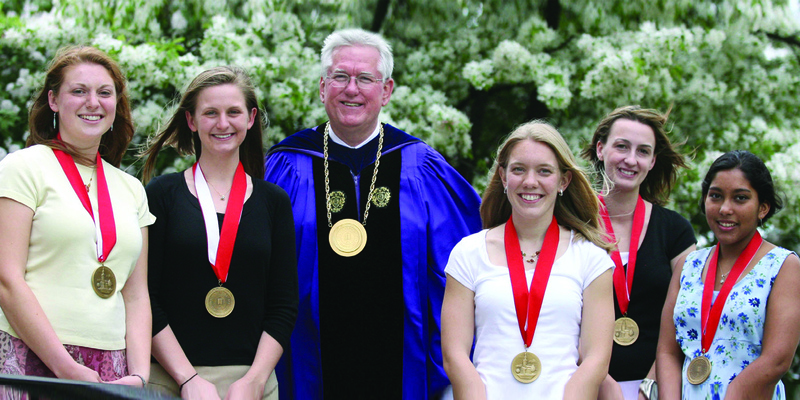
The 2006 President’s Medalists
The 2006 President’s Medalists
The Denison University President’s Medal was established in 1985 by University President Andrew DeRocco to recognize stellar achievement of the top students in each graduating class. In the medal’s inaugural year, President DeRocco said that the honor would be awarded to a small number of seniors who had “made especially good use of their undergraduate experience and contributed substantially to the community.” Over the course of 21 years, the President’s Medal has been presented to 138 Denisonians (six of whom are now on Denison’s faculty), emerging as Denison’s preeminent student award. Five more joined the esteemed ranks of President’s Medalists at the annual Academic Awards Convocation in April, marking the first time that all five medals went to women. They are:
Cora Walsh
biology major, Phi Beta Kappa,
Harry S. Truman Scholar, Fulbright Scholarship finalist,
HIV/AIDS researcher in sub-Saharan Africa,
Volunteer for Habitat for Humanity,
Nursing Home Companions, Hospice,
Relay For Life, the Red Cross Blood Drive
Julianne Mccall
Individually-designed neuroscience major,
Fulbright Research Scholar, president of Alpha Epsilon Delta and Omicron Delta Kappa honoraries, first place winner at the Ohio Intercollegiate Equestrian Show, chair of Hope for Autism
Kimberly Murley
Physics major, Phi Beta Kappa, Anderson Scholar, National Science Foundation Graduate Research Fellowship recipient, indoor and outdoor track team record holder, co-president of Denison’s chapter of Sigma Pi Sigma
Colleen Wirtz
biology major, Phi Beta Kappa, Academic All-American soccer player, four-time NCAC All-Conference, four-time NSCAA All-Great Lakes and three-time NSCAA All-American, NCAA Postgraduate Scholarship recipient, Omicron Delta Kappa vice president
Ishani Barnerji
psychology/cinema double major, June Orientation staff coordinator, head resident, Admissions Office tour guide, First Fridays Committee founder, Safe Zone facilitator, president of the online publication Inkslinger
How an Innovative First-Year Orientation Program Turned into a Collegewide Tradition
How an Innovative First-Year Orientation Program Turned into a Collegewide Tradition
When Laurel Kennedy was appointed dean of first-year students in 2003, she faced the same tough challenges as her predecessors and counterparts at other colleges. Namely, how would she introduce her college community to incoming students? Industry research showed that having at least one common experience is critical to a first-year class’s overall experience, but tangible examples were hard to come by. Most efforts—often taking the form of assigned readings, film viewings, or faculty dialogues—were met with minimal participation, and thus had minimal impact.
As Kennedy wrestled with ideas in those first few months, she realized that most of the previous attempts involved pushing information to a passive audience who were much more concerned with anxieties and wonders typical of brand new college students. What if, she wondered, instead of making them read a book or see a film, we ask them to produce their own creative or scholarly work? After all, isn’t the experience of their next four years to be about their own intellectual engagement and productivity?
By this time, Kennedy had already lined up the All-Campus Opening Convocation speaker, environmental attorney Robert F. Kennedy, Jr., whose work to clean up the Hudson River helped spark a nationwide river-keeper movement. So in June 2003, the inventive dean invited all incoming first-year students, as well as Denison’s faculty and staff, to think about rivers and their importance in our lives, and to express those thoughts through creative works of art, science, or prose. Anyone who submitted a work, she promised, would have an exclusive opportunity to meet Robert Kennedy at an exhibition of the “Rivers Project” contributions. More than 100 students and nearly two-dozen faculty and staff members took her up on the offer. In the following year, under the theme “Lifting Our Eyes Skyward,” Kennedy asked for submissions in consideration of the sky, and nearly a third of the incoming class and a larger number of faculty responded, earning the chance to meet astronaut/researcher/physician Mae Jamison.
Interestingly, several faculty picked up on the sky theme that year, addressing it through classes in creative writing, literature, honors seminars, and astronomy. This development prompted a new line of questions among Kennedy and her colleagues across campus. If our first-year students can produce such exciting results during a summer orientation exercise, shouldn’t we take advantage of their commitment to the topic by continuing that conversation throughout the year? Can we expand the conversation across our campus—between people, programs, and departments—to capitalize on this momentum and to build integrated intellectual community? (Kennedy notes that much of this thinking was inspired by a similar interdisciplinary focus on the Holocaust, led years ago by Professor of Religion David Woodyard ’54.)
As Denison approached the ’05-’06 academic year, the McGregor Fund of Detroit responded to these questions with a mightily generous three-year, $250,000 grant. The gift enabled the formal establishment of the McGregor Connections Initiative, under which the college will identify a broad intellectual annual theme that will appear in a variety of settings. It also covers the salary for a part-time coordinator who will ensure the program’s viability.
Musing on the significance of the McGregor Connections Initiative for a liberal arts college like Denison, former Provost David Anderson said, “Focusing on a common theme each year allows Denison to integrate the learning experiences of students. We know that students learn best when they can make connections between ideas presented in the classroom and experiences they have outside the classroom. Our McGregor grant will make it possible to explore our annual theme not only in courses but also in many other co-curricular ways across the campus.”
With the grant in place, Denison pursued the ’05-’06 theme of “Home”—how human beings create homes and in turn, how homes shape human beings. Under the title “Built by Rasp and Bicycle” (a nod to a poem by the late English professor Paul Bennett), the concept was addressed in an all-cam-pus convocation by former First Lady Rosalynn Carter, and explored through the first-year creative project as well as a broad range activities. Looking back, Laurel Kennedy said “home” was the ideal example of how such a theme should work: “‘Home’ built a very clear, concrete intellectual trajectory from the very personal to issues of public housing to the environment to international affairs.”
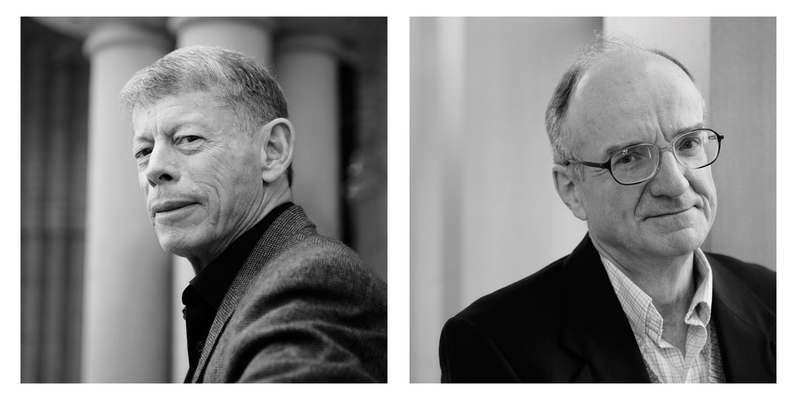
Two Professors, Well-Deserved Honors
By Jeff Gill
Left photo: Professor of Political Science Emmett H. Buell Jr., Right: Professor of Modern Languages Charles O’Keefe
Two Professors, Well-Deserved Honors
There may not be a large audience for “Literary Onomastics Studies,” or to follow the debate over “Enduring Controversies in Presidential Nominating Politics,” but hundreds, even thousands of Denisonians have sought knowledge and wisdom from professors Charlie O’Keefe and Emmett Buell. The profound contributions of both men were honored at last April’s Academic Awards Convocation in Swasey Chapel. Professor of Modern Languages Charles O’Keefe was presented with the 2006 Charles A. Brickman Teaching Excellence Award, and Professor of Political Science Emmett H. Buell Jr. was installed as the first holder of the Class of 1954 Richard G. Lugar Professorship in Public Policy.
Charlie O’Keefe arrived on campus in 1975, and Emmett Buell in 1969. Over the last three decades, these two individuals, very different in temperament and style, have both been very similar cornerstones of Denison’s commitment to undergraduate liberal arts education. As mentors, teachers, and scholars, they have contributed to students’ lives in ways that have lasted well beyond graduation.
At the convocation, former Provost David Anderson said of O’Keefe, chair of the Modern Languages Department, “Our honoree is one of the reasons why Denison offers such a stimulating, varied, and energized intellectual atmosphere.” With a commitment to off-campus study opportunities throughout his academic career, he represents (to quote Anderson again) “the need for teachers to recreate themselves as the world and they themselves change constantly and unpredictably.” From critical theory to particular French authors, O’Keefe places his scholarly work in the context of student engagement, with a full measure of wit and wisdom for all concerned.
Emmett Buell has not only led students through the study of the American political process; he has placed them in the heart of it, largely though the Lugar internship program in Washington, D.C. He has served as director of Denison’s Richard G. Lugar Program in Politics and Public Service since its establishment in 1995. Lugar’s Denison classmates permanently endowed the program on the occasion of their golden anniversary reunion in 2004.
As Lugar Professor, Buell also will direct the Lugar Colloquium in Public Policy, which was established with the same gift. The Lugar Colloquium will bring leaders and policy makers of national and international stature to campus, as they personally engage with Denison students in classrooms and public forums. Buell’s tireless efforts to keep the campus community directly connected with the national political scene have created opportunities on the hill that students don’t quite appreciate until they’ve moved on. For a small town in Ohio, major governmental figures roll through steadily during the school year, due in no small part to Emmett Buell’s persistence.
Two different men, but one shared commitment: teaching with passion, and inspiring among their students a similar passion for lifelong learning that travels well outside the classroom.
Future Vision, Present Tense
By Paul Pegher
Future Vision, Present Tense
Under the direction of the Denison University Board of Trustees and deft handling by Denison’s Division of Finance & Management, the college’s endowment is managed according to two primary objectives. The first is to provide a stable and growing support for the college’s annual operating budget. The second is to protect the endowment’s inflation-adjusted principal into perpetuity. Thanks in large part to wise investment decision in the ’90s, Denison’s endowment remained relatively strong through the economic slump in the early part of this decade, and a few observations show that, while there’s always room for improvement, the college’s finances remain in good health.
In fiscal 2006, the endowment generated a net investment return of 13.3% versus 9.3% in fiscal 2005. The market value of the endowment increased to $533 million from $480 million over the fiscal year, during which the endowment contributed $20 million to college operations, or just about $10,000 per student (the second-highest amount in the Great Lakes College Association).
But to place the subject in broader perspective, the annual endowment survey from the National Association of College and University Business Officers shows that among the 746 reporting institutions (231 public and 515 private), Denison ranked 116th in terms of total endowment size, and 63rd according to endowment per student. And in terms of average annualized return over 10 years, Denison ranks 38th among the 463 colleges and universities that participated in the survey from 1995 to 2005.
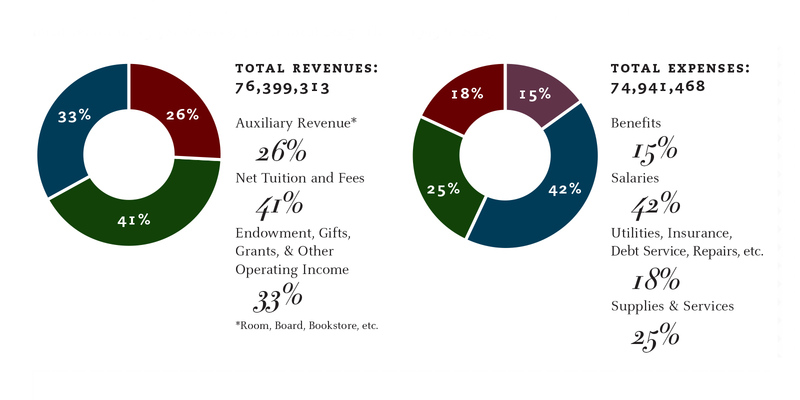

How the Diamonds Shine
Few scenes say summer like a night under the lights with America’s favorite pastime. With the 2006 season, Denison University’s field of dreams became a reality for the Big Red baseball and softball teams, who played the first night games in the college’s history in April. Dozens of after-dusk contests followed, and many more are scheduled for the 2007 season. The lights allow for later games and practices, which head baseball coach Barry Craddock described as “invaluable” for scheduling games after players’ classes. Along with the new lights, the school also installed 160 new seats for fans, providing greater comfort for the students and members of the Granville community. With these new additions, Denison has been selected as the site of the 2007 North Coast Athletic Conference baseball finals.
Same Game, New Team
Over the summer, Denison hosted the inaugural season of the Granville Settlers, the newest addition to the 20-year-old, wooden-bat Great Lakes Summer Collegiate League, which is made up of some of the prime college players in the region and across the nation. A popular attraction for many Granville residents, nighttime games became a showcase of potentially future major leaguers. Several Denison players were members of the team, including pitchers Troy Testerman ’07 and JD Wyborny ’08, along with infielders Chris Day ’07 and Andrew Pakla ’07. Funded by Major League Baseball, the Settlers’ advisory board is run by several Denison alumni, including Lou Mitchell ’57, Bill Giles ’56, and Dave Elliott ’87. The team’s general manager was Denison baseball coach Barry Craddock, who assisted with other GLSCL teams in summers past. Finishing fourth in the league, the Settlers are certain to become a summer tradition within the Denison and Licking County communities.

